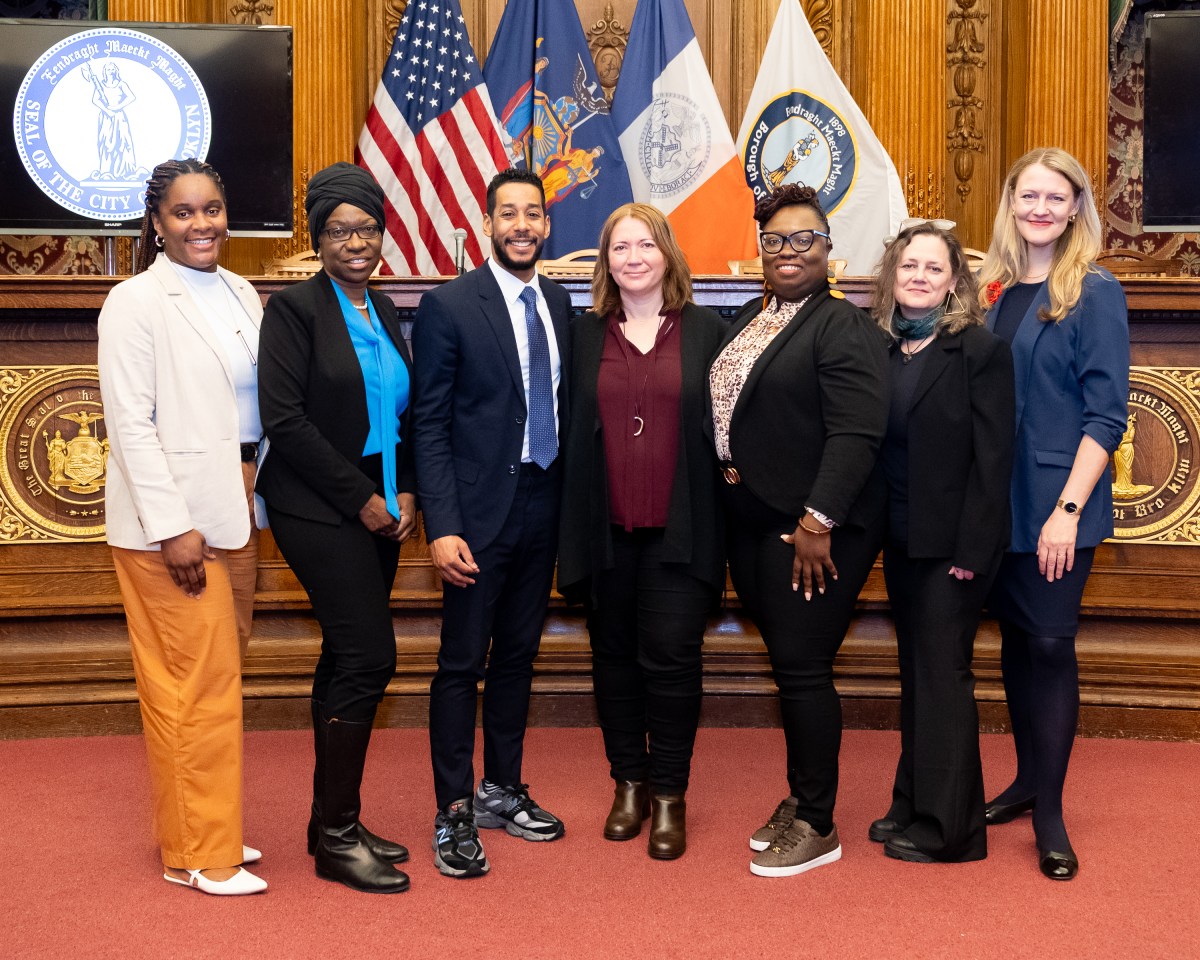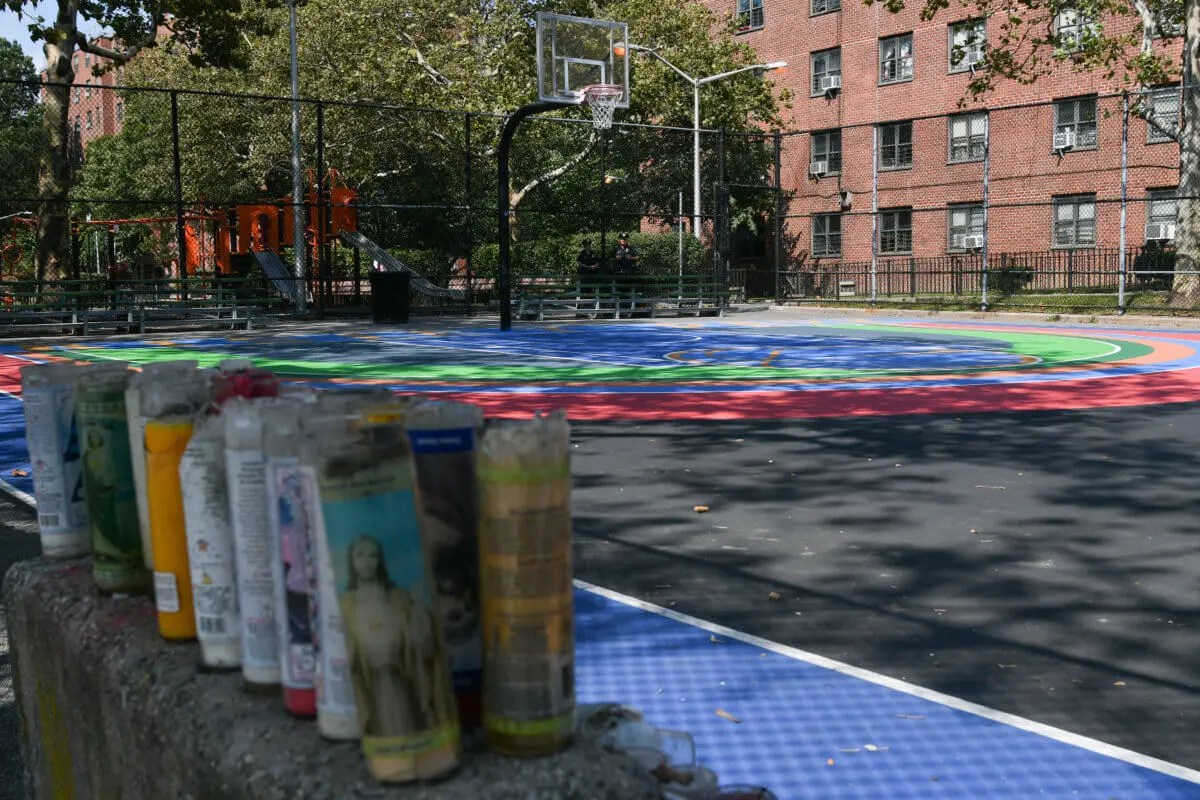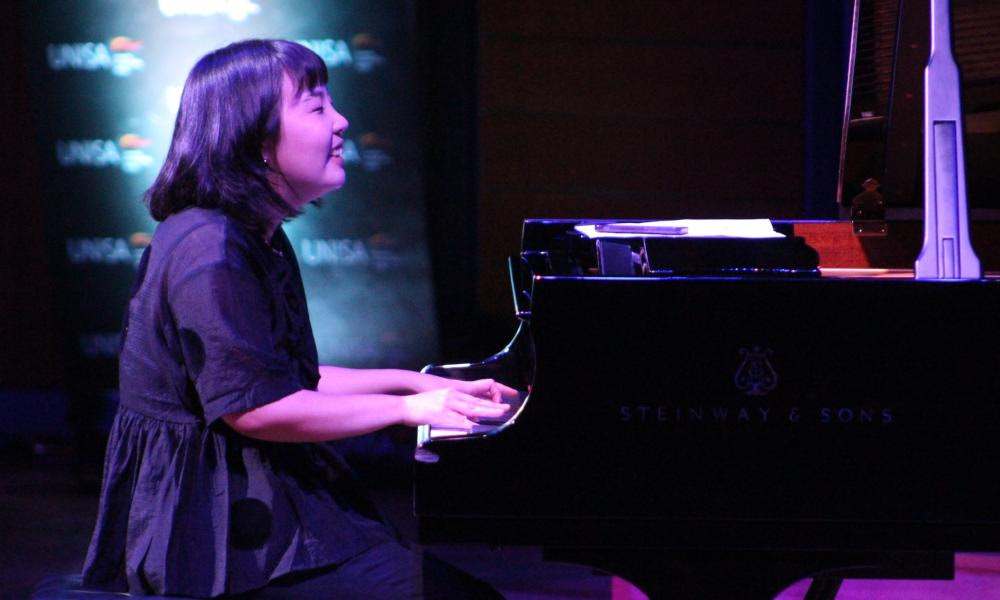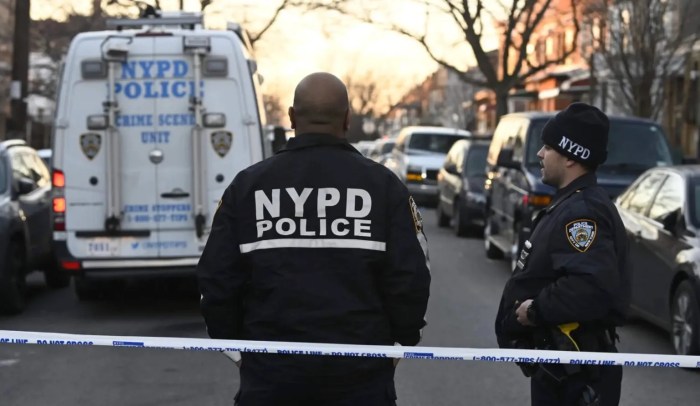
Landmarks Chairperson Robert Tierney listened during testimony last week about the Bialystoker Center and Home on the Lower East Side.
BY TERESE LOEB KREUZER | Two days before Valentine’s Day, advocates for the Bialystoker Center and Home for the Aged at 228 East Broadway crowded the Landmarks Preservation Commission’s hearing room to declare their love for this endangered building and to flood the commissioners with reasons why it should be saved. The 10-story brick structure trimmed with terra cotta opened in 1931 to care for elderly and infirm emigrés from Bialystok, Poland. It closed on Nov. 1, 2011.
Over almost two hours, more than 20 people came to the podium to ask that the Bialystoker Home be landmarked. They included City Councilmember Margaret Chin, a representative of Borough President Scott Stringer, members of Community Board 3, numerous speakers for historic preservation and neighborhood groups, and descendants of the building’s architect, Harry Hurwit, and of David Sohn, who raised the money to build the home and who managed it.
They also included people who live and work in the neighborhood, like Rima Finzi-Strauss.
“When I walk past the Bialystoker Home, I feel a direct connection to an older time when countless Jewish immigrants struggled to create a new life for themselves here,” she said.
At the height of the Depression, Bialystok Jews of the Lower East Side financed this grand structure, which cost $40,000 to build (almost $600,000 in today’s currency), with small contributions from their meager incomes. Triumphantly, this testimony to their generosity embodied their desire to be modern but not to forget their heritage and their homeland. The Bialystoker Home “is one of the more striking Art Deco buildings in the city,” said Samuel D. Gruber, lecturer in Judaic Studies at Syracuse University, whose letter in support of the building was read into the record.
In addition, with a nod to the past, the facade is decorated with roundels representing the 12 tribes of Israel and with the word “Bialystoker” in Hebraicized English lettering.
When the center opened, according to Joyce Mendelsohn, a founding member of a group called the Friends of the Bialystoker Home, “the founders declared ‘Our Home will combine modernity with compassion — a Home with a Heart that will stand as a monument for succeeding generations.’ ”
However, faced with debts of around $14 million for back taxes, wages and pension payments, the center’s board of directors voted to close the home. For months thereafter, their stated plan was to demolish the building and sell the land to a developer who would use the site to erect luxury apartments. The community resisted.
Then, in August 2012, the Landmarks Preservation Commission made it known that the building qualified under L.P.C. standards for landmark consideration. Months passed before the building was calendared, leaving the preservationists in a state of nervous uncertainty.
Six months went by. In that intervening time, something happened to change the Bialystoker Home’s board of directors’ thinking. It isn’t clear what that was.
One of the first speakers at the Landmarks Preservation Commission hearing on Feb. 12 was Gary Ambrose, a member of the Bialystoker board.
“We have been honored to be stewards of this wonderful building, which holds unique historical value,” he said. He mentioned the board’s “great reverence for the symbolism on its façade, including the name plate and the panels bearing the symbols of the 12 tribes of Israel, emblematic of the center’s mission of service,” and said that the board was “well aware of the prominent role that the building has played in the history of the Lower East Side in the Jewish community throughout the years.”
Ambrose said the board had been sorry to have to close the Bialystoker Center but saw no alternative.
Then, in a surprising about-face from its previous stance, he went on to say, “We wish it to be known that we very much understand and do not oppose the proposal by New York City Landmarks Preservation Commission to designate the Bialystoker Center a landmark.”
Previously, according to Councilmember Chin’s office, the board had been known to be negotiating a sale with the Aegis Group, which offered $17 million for the property with the intention of tearing it down and erecting luxury condominiums. At the time, Chin’s press secretary, Kelly Magee, said that, “Aegis has issues with landmarking” and would not buy the property if it were landmarked.
Having said that the board of directors were not opposed to landmarking, Ambrose went on to say, “At the same time, the board has a fiduciary responsibility to raise the necessary capital to honor its obligation to another incredibly deserving community — the Bialystoker Center’s 115 union employees. One hundred of these former employees are members of 1199, United Health Care Workers Union, and continue to wait for payment of back wages, benefits and pension funds.”
Ambrose said that the board was in discussions with potential buyers who recognize that the Bialystoker building is expected to receive city landmark designation and accept that reality. However, he continued, “At this time the board has not yet entered into a contract of sale with any of these prospective purchasers. As a result, we cannot yet be assured that the sale would generate sufficient funding to make good on Bialystoker’s obligations to our dedicated former staff, vendors and government agencies. This is of great concern to us.”
Ambrose made no promises about the building’s future. He said that the board remained “hopeful that the building ultimately will be preserved while simultaneously yielding a sufficient amount to allow us to repay our obligations. This truly would be a win-win,” he said, “allowing for the preservation of a meaningful piece of history while also ensuring that we are able to do the right thing and provide for the needs of the working people who have cared for the center’s senior citizens with such devotion.”
Michael Sokolow, a real estate developer with a firm called Sheridan Advisors, was in the room but had not planned to speak. Prompted by Ambrose’s comments, he came to the podium. He said that when the building was being marketed as a development site, his firm had put in an offer for the Bialystoker Home, agreeing to all of the board’s stated terms, but had been turned down. He also said that his firm supported landmarking and wanted to save the building.
“We’d love to work with you guys,” Sokolow said, referring to the members of the Landmarks Preservation Commission, “and work with the owners. I don’t want to throw anybody under the bus but I don’t know what their specific agenda is. We would love to sit down and talk to them and work out a deal and work with you guys.”
“They’re right behind you,” L.P.C. Chairperson Robert Tierney replied, referring to the Bialystoker Home’s attorney, who was still in the room (Gary Ambrose had already left.)
“Nothing is certain until the building is actually landmarked,” noted Joyce Mendelsohn after the hearing ended. It could be months before the L.P.C. votes on the landmarking proposal.
With all the talk at the hearing about the Bialystoker Home’s architectural and historic merit, one man made it dramatically clear what would be lost if the building were destroyed.
In halting and heavily accented English, Sam Solasz, 85, the Bialystoker Home’s former president, described what it had meant to him. He was born in Bialystok and fled during World War II, ending up in a displaced persons’ camp.
“I went to the Bialystoker Center the day I came to this country, January 22nd, 1951,” he said. “The Bialystoker Center and Home provided for everyone who came to this country from Bialystok. I came to this country with $10 and today thanks to the Bialystoker Center and care I have 50 people working for me and I’m one of the largest meat companies in New York State.”
He said the Bialystoker Center provided money to buy clothes and food and it found jobs for those who needed them. He said that former New York Mayor Abe Beame’s in-laws lived in the home for 20 years.
“Mayor Lindsay, Mayor Koch — everybody came to visit the home,” he said. “People were so generous,” he said, “and when someone asked, ‘What can I give back?’ the answer always was, ‘Don’t worry.’ ”
When he finished speaking, he was crying. Many who heard him later said that they were crying, too.





























